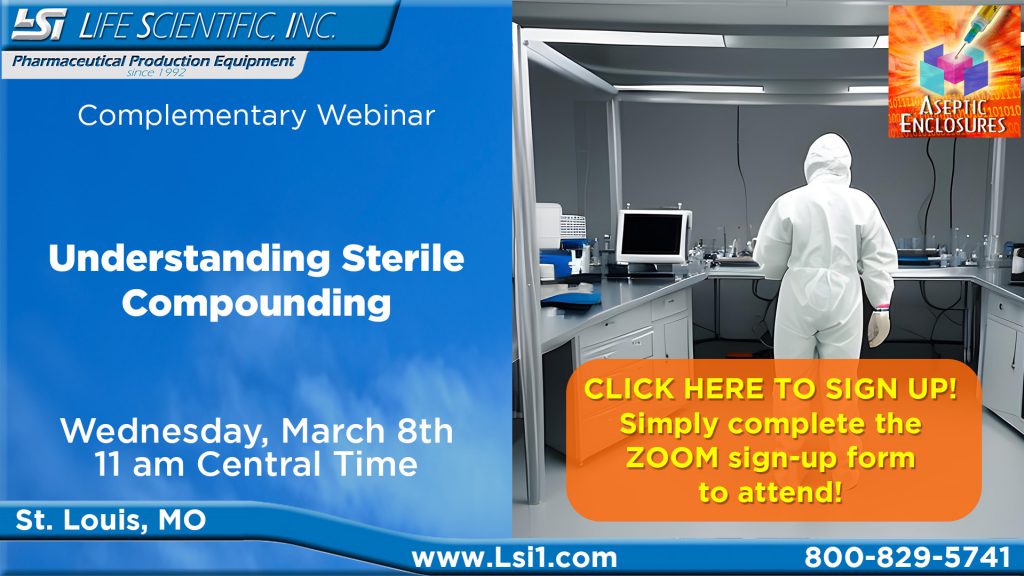Most of the typical cleanroom protocols are based on the Institute of Environmental Science and Technology (IEST) recommended practices for contamination control and the ISO 14644 series of international standards for cleanrooms and associated controlled environments.
The focal point of any protocol program is to protect the integrity of the cleanroom, the products, and processes in the cleanroom from the people working in the cleanroom. Whereas contamination may be due to the product, processes, or equipment in the clean room, the people working in the cleanroom are the main source of contamination. It is widely known that even a properly gowned person sheds a ton of particles, posing a risk for contaminating the area just by being physically present.
The governing authorities created a wireframe for the basic cleanroom protocols where all protocol programs address the functionality of the cleanroom, the behavior of the people working in the cleanroom, and the cleaning and maintenance of the cleanroom.
The must-have parts of a balanced cleanroom protocol program are:
- Cleanroom design and cleanroom floor-plan
- Compliance of Equipment placed inside of the cleanroom
- Mandatory gowning procedures
- Personnel behavior within the cleanroom environment
- Usage of Cleanroom supplies
- Cleanroom cleaning and maintenance
- Continuous improvement and assessments (audits and trending test results)
FACILITY DESIGN
The “Considerations in Cleanroom Design” is an excellent document to reference for understanding the design and functions of various components in cleanrooms. The document provides protocol guidance to cleanroom construction employees during the process of cleanroom construction. If you are a manufacturer of non-sterile medicinal products, you should define your own cleanroom/area standards using national and international standards.
The inclusion of the Facility design and its purpose in the Cleanroom protocol assures that Cleanrooms and clean areas are used as defined. If a Cleanroom is designed to be compliant with a specific USP standard, it should be used only as a cleanroom that is compliant with that standard.
EQUIPMENT COMPLIANCE
The key to ensuring compliance is the right choice of materials. Equipment needs to be smooth, cleanable and have low particle emissions. To avoid passive particle generation, stainless steel is recommended in place of plated or oxide-coated steel. Not all equipment that can be used in a lab can be used in a cleanroom. Storage equipment, step-over benches, and other change room furniture should be manufactured from stainless steel or solid laminate such as Trespa. Seating should have coverings that will not absorb particulates and plastic-covered – fabric type should be excluded. There are even specially designed printers or refrigerators that can be placed inside of a cleanroom.
GOWNING PROCEDURES
The standard cleanroom protocol must don the required cleanroom apparel applicable to the classification of the cleanroom. The recommended gowning configurations and frequency of change of garments should also be defined. Many clean-room operations require the cleanroom personnel to change from street clothes to 100% polyester building suits or tech suits to reduce the amount of particle contamination in the cleanroom environment.
Gowning procedures begin at home with daily bathing or showering, shaving, brushing of teeth and hair, and application of non-silicone containing skin moisturizers to reduce skin flakes. All make-up, hair gels, hair sprays, perfumes, aromatic after-shave lotions, or body lotions are not cleanroom compatible and therefore unacceptable to wear to work.
All employees must wash their hands before entering the cleanroom and after eating and/or using the toilet. Cleanroom compatible hand cream can be applied prior to gowning.
CLEANROOM BEHAVIOR
The basic protocol should point out all of the major hot points that can spread contamination during critical activities. The protocol should define the protocol for touching your skin or other people. Cleanroom personnel should avoid touching human contact sites such as pens bin handles. keyboards and paperwork.
CLEANROOM SUPPLIES
The basic protocol should at least define the minimal specs of all supplies that go in and out of the cleanroom, as well as define all the incoming and outgoing procedures for getting supplies in and out of the cleanroom with the lowest risks possible of contaminating the cleanroom.
CLEANROOM MAINTENANCE AND IMPROVEMENT
It is highly recommended that at the end of every shift, the personnel wipes down all work areas and puts away products and supplies between shifts to prevent further contamination.
The protocol should provide instructions on how the personnel could submit amendments to the protocol itself to make sure that the cleanroom remains compliant and its protocol keeps on improving by reporting all problems they encounter on regular basis.
To get our experts’ help with setting up your cleanroom, please get in touch with us and we’ll be glad to help. Simply fill out the contact form and we’ll get back to you at our earliest convenience.


